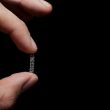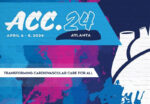TAVR’s significant advance has driven the development of valve technology, which is currently in its third generation. Even though outcomes have improved, randomized studies are yet to compared balloon-expandable (BEV) vs self-expanding (SEV) valves in randomized studies, and we only have information from different analysis with contradicting conclusions. This was a meta-analysis of 16 studies...
EuroPCR 2024 | CALIPSO: CTO vs Angiography Guided Treatment of Calcified Lesions
The presence of calcified lesions worsens percutaneous coronary intervention prognosis, presenting more restenosis, thrombosis and need for new revascularization. The aim of this study was to assess the superiority of CTO with a prespecified management algorithm on a conventional angiography treatment, in addition to assessing CTO safety. A superiority randomized study was carried out including...
TAVR in Bicuspid Valves
Bicuspid aortic valve (BAV) disease affects 1%-2% of the population and manifests with severe aortic stenosis in the middle-aged. It characterizes for a very different anatomy with more calcification than the tricuspid aortic valve. At present, surgical aortic valve replacement (SAVR) is the first treatment indication. TAVR in this scenario has shown, in different studies,...
Reinterventions in TAVR with Self-Expanding Valves
TAVR treatment of severe aortic stenosis is becoming more and more common, showing comparable evolution, or even superior in some studies when using the femoral approach, vs. surgical aortic valve replacement (SAVR). One of the current challenges is TAVR durability vs. SAVR. Even though 9 or 10 years has been deemed acceptable by current standards,...
LpA: 30-Year Cardiovascular Followup in Primary Prevention Cohorts
For years, treating dyslipidemia mainly focused on reducing LDL cholesterol (LDL-C) with statins, which had shown benefits in reducing atherosclerotic cardiovascular disease (ASCVD). Lipoprotein(a) [Lp(a)] is a form of apoB-containing lipoprotein bound to a hydrophilic, highly glycosylated protein called apolipoprotein(a) [apo(a)]. Circulating levels of Lp(a) are genetically determined, and are hardly affected by eating habits...
SOLACI@PCR Joint Session at EuroPCR 2024 – See You in Paris on May 14 thru 17
The Latin American Society of Interventional Cardiology will once more say here at EuroPCR 2024, undoubtedly one of the most relevant international meetings in the field. In this context, a joint symposium will be held on Thursday 16 at 14.45 (UTC +2 – Paris time), in room 253. This session will discuss “State of the...
Carotid Endarterectomy vs. Carotid Angioplasty in Symptomatic and Asymptomatic Patients: 30-Day Outcomes
Extracranial carotid artery disease represents 15 to 20% of all strokes. Carotid revascularization plays a role in primary and secondary prevention of cerebrovascular events. Outcomes of two common revascularization strategies, Carotid endarterectomy (CAE) and carotid artery stenting (CAS), have been studied and compared. In recent years, complications associated to CAS have dropped thanks to technical...
Drug-Coated Balloon Angioplasty in Femoropopliteal CTOs: Intraluminal or Subintimal?
Patients with peripheral vascular disease often experience femoropopliteal compromise. It is estimated that approximately 50% of lesions in this area are chronic total occlusions (CTO). Even though success rate has improved for peripheral CTO treatments, long term clinical and technical outcomes have not been fully determined yet. Prior research has looked into stenting outcomes in...
Peripheral Vascular Disease: Our Reality in Latin America, with the LATAM SOLACI Peripheral Registry
On the one hand, chronic peripheral vascular disease is on the rise. On the other, over the past 20 years, percutaneous coronary intervention (PCI) has gained considerable ground thanks to various new devices, replacing surgery as an alternative in most scenarios. Both strategies have shown similar results, but PCI has fewer complications and shorter hospital stays....
ACC 2024 | ORBITA-COSMIC
Coronary sinus reduction (CSR) is a relevant area of study for the treatment of refractory angina, with hopes of improving myocardial perfusion. However, to date, there are no conclusive data. The ORBITA-COSMIC study is a randomized, double-blind, placebo-controlled trial conducted at six centers in the UK. Researchers recruited patients with angina and chronic ischemia who...








